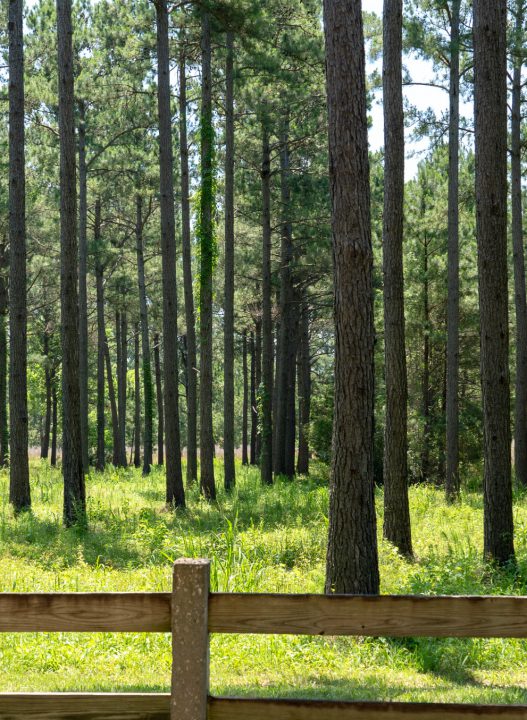Fighting Climate Change Today
An all-in approach on renewable energy
There is now broad consensus that limiting global warming and averting the most dangerous impacts of climate change require immediate action to decarbonize modern energy systems. The window of opportunity is narrowing quickly in the face of stubborn political and economic headwinds. At Enviva, we know that the world can’t afford to wait: We need immediate emissions reductions in energy production from solutions available today—solutions like sustainable wood bioenergy.

Global Consensus
Reducing dependence on fossil fuels
Countries like the U.K., Denmark, Germany, Japan, and Sweden are increasingly turning to wood-based bioenergy. Across Europe, biomass represents more than 60 percent of renewable energy consumption and is widely seen as essential to meeting ambitious carbon reduction goals. Wood bioenergy can directly displace fossil fuels for energy production. In the Southeast U.S., privately owned and managed forests produce one-fifth of the world’s wood products. And even as they produce these harvested wood products, forests in the region are adding more carbon. Because forest landowners respond to robust forest products markets by investing in their forests, the region pulls more carbon out of the atmosphere year after year.
Carbon Accounting
A standardized approach
What is carbon accounting?
Carbon accounting is the process by which governments quantify their greenhouse gas emissions (GHG), so that they may understand their climate impact and set goals to limit their emissions. This is also referred to as a carbon or GHG inventory.
At a global level, internationally-accepted inventory methodologies are developed and maintained by the Intergovernmental Panel on Climate Change’s (IPCC’s) Task Force on National Greenhouse Gas Inventories. As is typical for IPCC processes, experts from around the world are nominated by their countries to serve on the Task Force. This body sets forth carbon inventory guidelines and methods, which are updated periodically as new information becomes available. The most recent complete set of GHG inventory guidelines was published in 2006; the latest refinement was released in May 2019 and included the work of 190 world-known climate experts.
Countries around the world employ this carbon inventory methodology in order to accurately prepare and submit their national GHG inventory reports across their economies to meet their reporting obligations as Parties to the UN Framework Convention on Climate Change (UNFCCC). These inventories seek to provide a complete and accurate representation of the GHG sources (emissions) and sinks (sequestration) in each country.
Because of these inventories, we have a standardized and agreed international approach to measure and report on the carbon sources and sinks that occur as a result of the economic activity in a country. This information enables informed decision-making about national and international climate action.
How is carbon accounted for in forests?
Events like tree mortality, land clearing, and forest harvests create emissions when the carbon stored in forests is lost to the atmosphere. However, at the same time, biomass and carbon are sequestered in forests as they grow. The IPCC uses specific methodology for calculating carbon sources and sinks from forest land in the Agriculture, Forestry, and Other Land Use (AFOLU) sector. The inventory method accounts for and calculates the carbon exchange between land and atmosphere by measuring the difference between all that is grown and all that is harvested (or otherwise is cleared or dies) for the managed forest. When carbon sequestration (also called forest growth) exceeds emissions, forest carbon will increase; likewise, if emissions exceed growth, forest carbon will decline.
The vast majority of the Southeast U.S. is forested, and every year, harvest occurs on about 3 percent of forest land in the region. Simultaneously, the other 97 percent of the forest is in various stages of regrowth. In other words, in any year in the Southeast U.S., for every acre that is harvested (and losing carbon), 49 acres are growing back (and gaining carbon).
The U.S. Forest Service measures forest inventory each year and publishes the data through the Forest Inventory and Analysis (FIA) Program. In the Southeast U.S., we know from the most recent forest inventory measurements that forest carbon increases year over year, at a rate of 1.9 times. This means that for every ton of wood removed from the forest for products each year, 1.9 tons is grown in the same period. We see similar increases in forest carbon stocks year over year in Enviva’s supply areas.
This is relevant to the IPCC’s approach to accounting for stack emissions when wood pellets are used for energy. Because emissions and sequestration associated with forest products are counted in the AFOLU sector for a country’s inventory, it is not appropriate to also count the stack emissions from forest products (which include wood pellets) in the energy sector. To do so would be double counting, because the net atmospheric impact from harvest for that forest product is already and appropriately counted in the land sector.
The continued forest carbon gain across the landscape, as measured and reported by U.S. Forest Service data, means that products from the Southeast U.S., including wood bioenergy, are not adding carbon emissions to the atmosphere. As a result, when wood pellets from this region are used to generate energy, we can set stack emissions to zero.
What about supply chain emissions?
Once we have accounted for the stack emissions, the remaining emissions from our product arise from the fossil fuels used in our supply chain, from forest to plant to port. When all of these supply chain emissions are accounted for and compared to the stack emissions from fossil fuels like coal, we find that our wood pellets can reduce greenhouse gas emissions by up to 85 percent compared to coal.

Keeping Forests As Forests
Ensuring protection and growth
In the Southeast U.S., where private landowners own the majority of the forest landscape, the alternative to biomass sourcing is not an unharvested forest. In the absence of robust forest products markets for landowners, low-value wood would go unused—entering the waste stream, decaying, and releasing greenhouse gases without a product value. Even worse, if forest markets are unable to provide sufficient financial incentive to landowners, forest land would be converted to higher income-generating agriculture or development.
